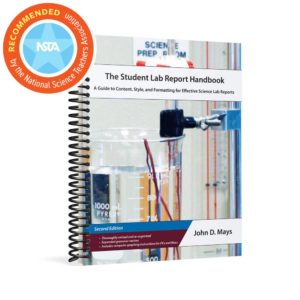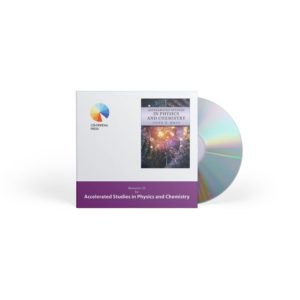Preface for Teachers
|
Preface for Students
|
|
Chapter 1: The Nature of Scientific Knowledge
|
|
1.1 Modeling Knowledge
|
|
1.1.1 Kinds of Knowledge
|
|
1.1.2 What is Truth and How Do We Know It?
|
|
1.1.3 Propositions and Truth Claims
|
|
1.1.4 Truth and Scientific Claims
|
|
1.1.5 Truth vs. Facts
|
|
1.2 The Cycle of Scientific Enterprise
|
|
1.2.1 Science
|
|
1.2.2 Theories
|
|
1.2.3 Hypotheses
|
|
1.2.4 Experiments
|
|
1.3 The Scientific Method
|
|
1.3.1 Conducting Reliable Experiments
|
|
1.3.2 Experimental Variables
|
|
1.3.3 Experimental Controls
|
|
Did You Know… Double-blind Experiments
|
|
Did You Know… The Davy Safety Lamp
|
|
Chapter 2: Motion and the Medieval Model
|
|
2.1 Computations in Physics
|
|
2.1.1 MKS Units
|
|
2.1.2 Dimensional Analysis
|
|
2.1.3 Accuracy and Precision
|
|
Did You Know… Defining Base Units
|
|
2.1.4 Significant Digits
|
|
2.1.5 Scientific Notation
|
|
2.1.6 Problem Solving Methods
|
|
2.2 Motion
|
|
2.2.1 Velocity and Uniform Acceleration
|
|
The Universal Problem Solving Method
|
|
2.2.2 Velocity, Acceleration, and Slope
|
|
2.2.3 Graphical Analysis of Motion
|
|
2.3 The Medieval Model of the Heavens
|
|
2.3.1 The Ptolemaic Model
|
|
2.3.2 The Ptolemaic Model and Church Theology
|
|
2.4 The Copernican Revolution
|
|
2.4.1 Copernicus and Tycho
|
|
2.4.2 Kepler and the Laws of Planetary Motion
|
|
2.4.3 Galileo
|
|
2.4.4 Newton, Einstein, and Gravitational Theory
|
|
Did You Know… William Hershel’s monster telescope
|
|
Did You Know… Saturn
|
|
Chapter 3: Newton’s Laws of Motion
|
|
3.1 Matter, Inertia, and Mass
|
|
3.2 Newton’s Laws of Motion
|
|
3.2.1 The Three Laws of Motion
|
|
3.2.2 Actions and Reactions
|
|
3.2.3 Showing Units of Measure in Computations
|
|
3.2.4 Weight
|
|
Thinking About Newton’s Laws of Motion
|
|
3.2.5 Applying Newton’s Laws of Motion
|
|
3.2.6 How a Rocket Works
|
|
Did You Know… Proving elliptical orbits
|
|
Chapter 4: Variation and Proportion
|
|
4.1 The Language of Nature
|
|
4.2 The Mathematics of Variation
|
|
4.2.1 Independent and Dependent Variables
|
|
4.2.2 Common Types of Variation
|
|
4.2.3 Normalizing Exercises
|
|
Chapter 5: Energy
|
|
5.1 What is Energy?
|
|
5.1.1 Defining Energy
|
|
5.1.2 The Law of Conservation of Energy
|
|
5.1.3 Mass-Energy Equivalence
|
|
5.2 Energy Transformations
|
|
5.2.1 Forms of Energy
|
|
5.2.2 The Energy Trail
|
|
5.2.3 The Effect of Friction on a Mechanical System
|
|
5.2.4 Energy “Losses” and Efficiency
|
|
5.3 Calculations With Energy
|
|
5.3.1 Gravitational Potential Energy and Kinetic Energy
|
|
5.3.2 Work
|
|
5.3.3 Applying Conservation of Energy
|
|
5.3.4 Conservation of Energy Problems
|
|
Did You Know… Nuclear energy calculations (Just for fun!)
|
|
5.3.5 Energy in the Pendulum
|
|
Did You Know… Dark energy
|
|
Chapter 6: Heat and Temperature
|
|
6.1 Measuring Temperature
|
|
6.1.1 Temperature Scales
|
|
6.1.2 Temperature Unit Conversions
|
|
6.2 Heat and Heat Transfer
|
|
6.2.1 How Atoms Possess Energy
|
|
6.2.2 Internal Energy and Thermal Energy
|
|
Did you know… How fast are air molecules moving?
|
|
6.2.3 Absolute Zero
|
|
6.2.4 Thermal Equilibrium
|
|
6.3 Heat Transfer Processes
|
|
6.3.1 Conduction
|
|
6.3.2 Convection
|
|
6.3.3 Radiation
|
|
6.4 The Kinetic Theory of Gases
|
|
6.5 Thermal Properties of Substances
|
|
6.5.1 Specific Heat Capacity
|
|
6.5.2 Thermal Conductivity
|
|
6.5.3 Heat Capacity vs. Thermal Conductivity
|
|
Did You Know… The temperature in outer space
|
|
Chapter 7: Waves, Sound, and Light
|
|
7.1 Describing Waves
|
|
7.1.1 What is a Wave?
|
|
7.1.2 Categorizing Waves
|
|
7.2 Wave Calculations
|
|
7.2.1 Velocity, Frequency, and Wavelength
|
|
7.2.2 The Wave Period
|
|
7.3 Wave Interactions
|
|
7.3.1 Reflection
|
|
7.3.2 Refraction
|
|
7.3.3 Dispersion
|
|
7.3.4 Diffraction
|
|
7.3.5. Resonance
|
|
7.3.6 Interference
|
|
7.4 Sound Waves
|
|
7.4.1 Variations in Air Pressure
|
|
7.4.2 Frequencies of Sound Waves
|
|
Did You Know… Dampening resonances in skyscrapers
|
|
7.4.3 Loudness of Sound
|
|
7.4.4 Connections Between Scientific and Musical Terms
|
|
7.4.5 Harmonics and Timbre
|
|
7.5 Electromagnetic Waves and Light
|
|
7.5.1 Light as Waves of Electromagnetic Fields
|
|
7.5.2 The Electromagnetic Spectrum
|
|
Did You Know… Sonic book photography
|
|
Chapter 8: DC Circuits
|
|
8.1 The Amazing History of Electricity
|
|
8.1.1 Early Investigations
|
|
8.1.2 The Electricity-Magnetism Connection
|
|
8.2 Charge and Static Electricity
|
|
8.2.1 Electric Charge
|
|
8.2.2 Static Electricity
|
|
Did You Know… Plasmas
|
|
8.3 Electric Current and Circuits
|
|
8.3.1 Current
|
|
Did You Know… The first color photograph
|
|
8.3.2 Why Electricity Flows so Easily in Metals
|
|
8.3.3 The Water Analogy
|
|
8.3.4 The Basic DC Electric Circuit
|
|
8.3.5 Two Secrets
|
|
8.3.6 Electrical Variables and Units
|
|
8.4 Relations Between Variables and Circuits
|
|
8.4.1 Ohm’s Law
|
|
8.4.2 What Exactly Are Resistors and Why Do We Have Them?
|
|
8.4.3 Through? Across? In?
|
|
8.4.4 Voltages Are Relative
|
|
8.4.5 Power in Electrical Circuits
|
|
8.5 Multi-Resistor Circuits
|
|
8.5.1 Two-Resistor Circuits
|
|
8.5.2 Equivalent Resistance
|
|
8.5.3 Significant Digits in Circuit Calculations
|
|
8.5.4 Larger Circuit Networks
|
|
8.6 Solving DC Circuits
|
|
8.6.1 Kirchoff’s Laws
|
|
Did You Know… Rectifiers and inverters
|
|
8.6.2 Putting it all Together to Solve DC Circuits
|
|
Did You Know… The War of Currents
|
|
Chapter 9: Fields and Magnetism
|
|
9.1 Three Types of Fields
|
|
9.2 The Laws of Magnetism
|
|
9.2.1 Ampere’s Law
|
|
9.2.2 Faraday’s Law of Magnetic Induction
|
|
9.2.3 The Right-Hand Rule
|
|
9.3 Magnetic Devices
|
|
9.3.1 Solenoids
|
|
9.3.2 Motors and Generators
|
|
9.3.3 Transformers
|
|
Did you know… Transformers
|
|
Chapter 10: Substances
|
|
10.1 Review of Some Basics
|
|
10.2 Types of Substances
|
|
10.2.1 Elements
|
|
10.2.2 Compounds
|
|
10.2.3 Heterogeneous Mixtures
|
|
10.2.4 Homogeneous Mixtures
|
|
10.3 Solubility
|
|
Did you know… Carbon Structures
|
|
10.4 Phases and Phase Transitions
|
|
10.4.1 The Phases of Matter
|
|
10.4.2 Evaporation
|
|
10.4.3 Sublimation
|
|
Did You Know… Triple point
|
|
10.5 Physical and Chemical Properties and Changes
|
|
10.5.1 Physical Properties
|
|
10.5.2 Chemical Properties
|
|
10.5.3 Physical and Chemical Changes
|
|
Chapter 11 Historical Atomic Models
|
|
11.1 The History of Atomic Models
|
|
11.1.1 Early Models
|
|
11.1.2 Dalton’s Model
|
|
11.1.3 Modern Atomic Experiments
|
|
11.2 Density
|
|
Chapter 12: The Bohr and Quantum Atomic Models
|
|
12.1 The Bohr Model
|
|
12.1.1 Bohr’s Planetary Model
|
|
12.1.2 Atomic Spectra
|
|
12.2 The Quantum Model
|
|
12.2.1 Quantum Numbers and Orbitals
|
|
Did You Know… Energy transitions in the hydrogen atom
|
|
12.2.2 Electron Configurations
|
|
12.3 Atomic Masses and Isotopes
|
|
12.3.1 Atomic Number, Atomic Mass, and Mass Number
|
|
12.3.2 Isotopes
|
|
Chapter 13: Atomic Bonding
|
|
13.1 Bonds and Valence Electrons
|
|
13.1.1 The Science of Atoms
|
|
13.1.2 The Three Types of Atomic Bonds
|
|
13.1.3 Valence Electrons and Energy Levels
|
|
13.1.4 Goals Atoms Seek to Fulfill
|
|
13.2 Metallic Bonds
|
|
13.3 Ionic Bonds
|
|
13.3.1 Bonding by Electron Transfer
|
|
13.3.2 Valence Numbers and Ionic Compound Binary Formulas
|
|
13.4 Covalent Bonds
|
|
13.4.1 Bonding by Electron Sharing
|
|
13.4.2 Diatomic Gases
|
|
13.5 Hydrogen
|
|
13.6 Polyatomic Ions
|
|
Did You Know… X-ray crystallography
|
|
Chapter 14: Chemical Reactions
|
|
14.1 Chemical Equations
|
|
14.2 Four Types of Chemical Reactions
|
|
14.2.1 Synthesis Reactions
|
|
14.2.2 Decomposition Reactions
|
|
14.2.3 Single Replacement Reactions
|
|
14.2.4 Double Replacement Reactions
|
|
14.3 Balancing Chemical Equations
|
|
14.3.1 Law of Conservation of Mass
|
|
14.3.2 Balancing Chemical Equations
|
|
14.4 Energy in Chemical Reactions
|
|
14.4.1 Activation energy
|
|
14.4.2 Exothermic and Endothermic Reactions
|
|
14.5 Reaction Rates and Endothermic Reactions
|
|
14.5.1 Catalysts
|
|
14.5.2 Collision Theory
|
|
Appendix A: Conversion Factors, Prefixes, and Physical Constants
|
Appendix B: Chapter Objective Lists
|
Appendix C: Laboratory Experiments
|
Appendix D: Scientists Required for Cumulative Review
|
Appendix E: Unit Conversions Tutorial
|
Appendix F: References
|
Appendix G: Image Credits
|
 Teachers may be familiar with IPC courses (integrated physics and chemistry). ASPC is similar but goes deeper into topics so that students get a more enduring introduction. ASPC also moves along a little faster than our other physics offering, Introductory Physics.
Teachers may be familiar with IPC courses (integrated physics and chemistry). ASPC is similar but goes deeper into topics so that students get a more enduring introduction. ASPC also moves along a little faster than our other physics offering, Introductory Physics.







